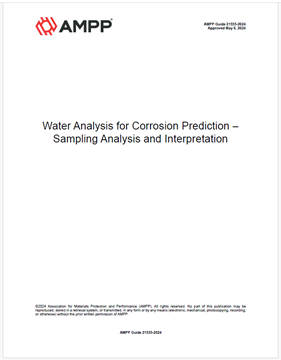Search
Products tagged with 'alkalinity'
View as
Sort by
Display
per page
AMPP Guide 21555-2024, Water Analysis for Corrosion Prediction - Sampling Analysis and Interpretation
Product Number:
AMPP Guide 21555-2024
Publication Date:
2024
$109.00
Corrosion Of Mild Steel In Concentrated Monoethylene Glycol (MEG)
Product Number:
51321-16701-SG
Publication Date:
2021
$20.00
Guidelines for Using Water Analysis for Corrosion Prediction- Sampling Analysis and Data Interpretation
Product Number:
51323-19421-SG
Publication Date:
2023
$20.00
Understanding Alkalinity for Use in Corrosion Prediction
Product Number:
51324-21064-SG
Publication Date:
2024
$40.00
Upset Conditions In Anaerobic Digesters In Wastewater Treatment Plants Cause Degradation Of Protective Linings
Product Number:
51322-18235-SG
Publication Date:
2022
$20.00





